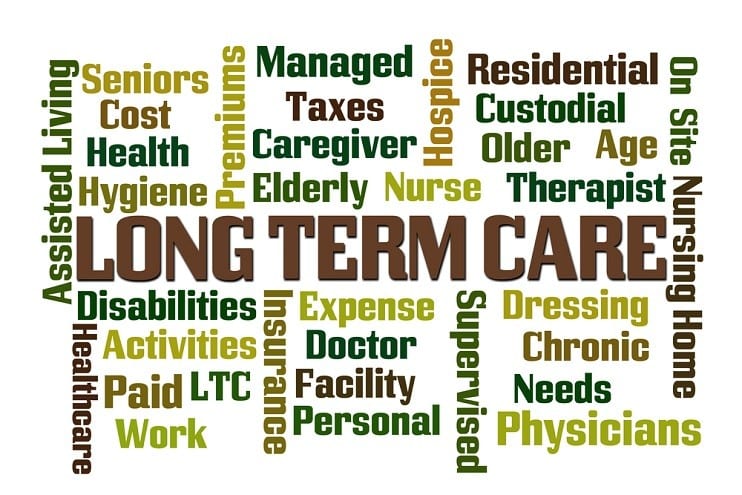Long-Term Care Options for Seniors

None of us likes to think about it. But the fact is that in any older married couple, the odds are pretty high that at least one of the spouses will spend some time in long-term health care. More than likely, it won’t be the traditional years’-long stay in a nursing home. The stay likely will be for rehabilitation or recovery after an injury or illness.
These days there are a number of options for long-term health care. In addition to nursing homes, there are assisted living facilities, home health care, group homes, continuing care communities and independent living. Each is very different. No doubt you don’t care to discuss the possibility of long-term care now. But if you wait until there is a crisis, a decision will have to be made rapidly by your loved ones, and that could mean the wrong decision.
So let’s discuss the different options and when they are appropriate. Then you or someone in your family might want to tour some of the facilities in your area. (Hint: A woman in her forties often makes the decision regarding a long-term care facility; in other words, a daughter or daughter-in-law.) Here is how to compare the options:
Home health care. Most people want to be cared for in their homes whenever possible. Home health care agencies do tasks ranging from cooking and light housekeeping to providing full-time skilled nursing care. Home care is expensive, and Medicare limits its coverage. More long-term care insurance policies are covering home care, but the older ones don’t. The difficulty with home health care is being assured that the treatment and care are being done. Also, you must be confident that the home care agency screens and monitors its employees well.
Assisted living. These popular, fast-growing facilities are often considered alternatives to nursing homes, but they are not. Assisted living is for someone who cannot live independently because of an inability to perform only one or two tasks of daily living (eating, bathing, dressing, walking, etc.). But it is not for someone who needs skilled nursing care or a lot of help, attention, or rehabilitation. Assisted living facilities usually are loosely regulated and aren’t required to have a lot of nursing care on the premises. And don’t be swayed by the comparatively lower rates of assisted living. There usually are a great number of extras added to the basic room rate.
Nursing homes. These traditional long-term care facilities have a number of health care professionals providing care and monitoring patients. These are a step below hospitals and are for people who need skilled nursing on a regular basis or significant attention or rehabilitation. These facilities also have additional charges above the basic room rate, depending on the needs of the patient. Quality among nursing homes can vary considerably. Some seek primarily Medicaid-eligible residents. Medicaid pays below-market rates, so these facilities tend to offer staffing and services accordingly. Other facilities have a higher ratio of “private pay” patients and have a higher ratio of registered nurses to residents and other features.
Group homes. These generally offer assisted living-type services in a home-like building of 15 or fewer residents. They often face less regulation than other options. While a home-like setting can seem more attractive, you have to consider factors such as how stairways and narrow hallways will limit a resident’s mobility, as well as the other issues related to assisted living generally.
Independent living. These are apartments for older individuals who can live on their own but want to live near people their own age or near the special facilities available in the building. Independent living facilities often offer a number of group activities, activity rooms, recreation facilities, and transportation to local shopping malls, doctors’ offices, and other locations. There is no medical care and minimal services such as housekeeping.
Continuing care. These are conglomerations that put different kinds of facilities in one location. The most common combination is independent living, assisted living, and a nursing home. You pay a large fee when entering the community, plus monthly charges. That guarantees you a place as needed in each facility. As you age, you can shift from independent living to assisted living to a nursing home as your needs warrant. One big advantage to married couples is that if one needs to move to a higher level of care, the other is living a short walk away.
Those are the different options for long-term health care. You and your family might want to consider what is available in each of these categories in your area. In next month’s visit I’ll discuss ways to pay for long-term care.
![]()





